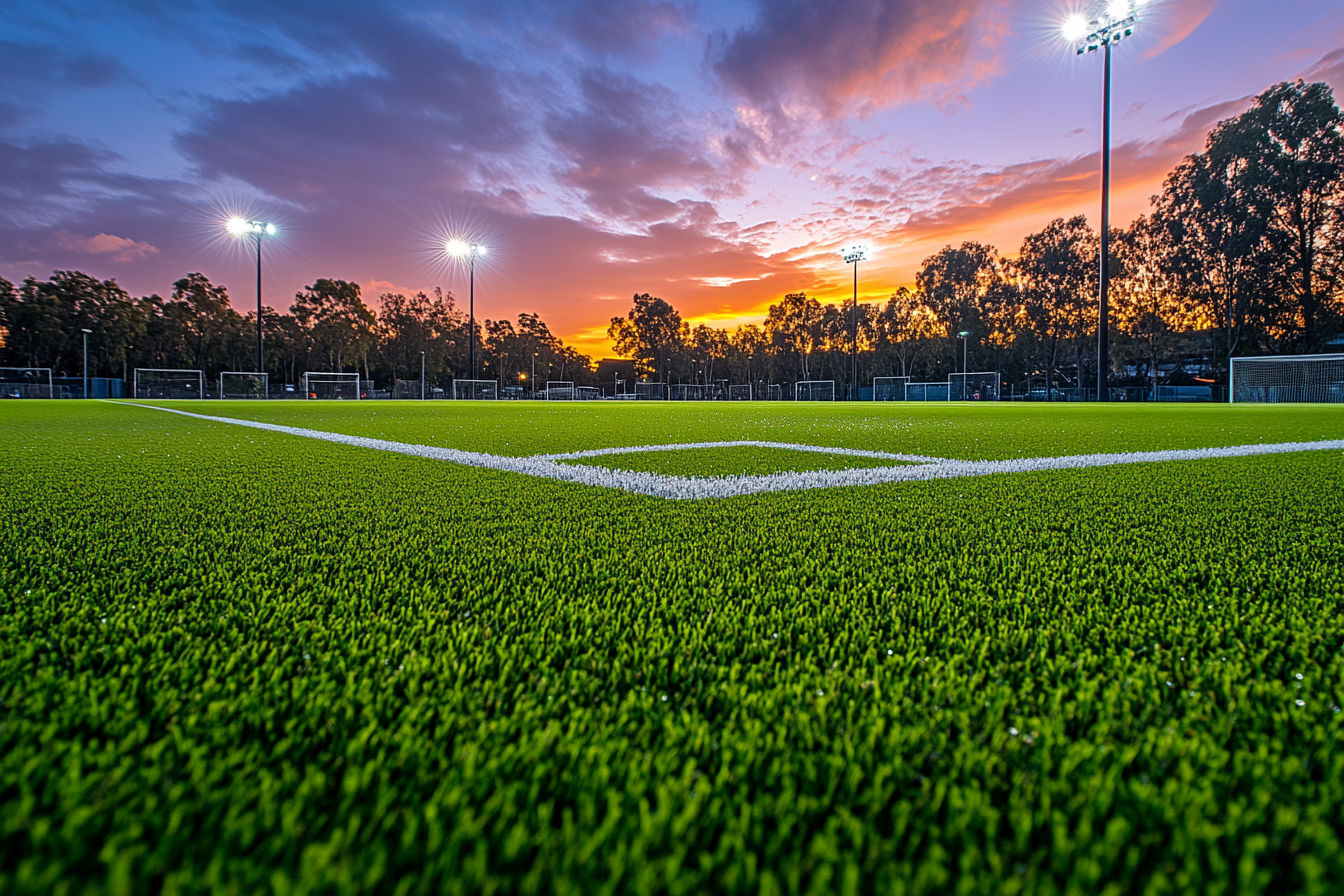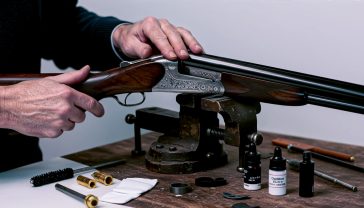The Guide to 3G Pitches: Everything You Need to Know
Your definitive guide to 3G artificial pitches. We cover the technology, the pros and cons, the safety debate, and why they’ve taken over grassroots sport in Britain.

This post may contain affiliate links. If you make a purchase through these links, we may earn a commission at no additional cost to you.
Ever turned up for a five-a-side game on a Tuesday night and found yourself playing on a surface that looks and feels almost like real grass, but just… isn’t? Chances are, you were playing on a 3G pitch. These surfaces have popped up everywhere, from local schools and leisure centres to the training grounds of Premier League giants. They’ve become a massive part of grassroots sport in Britain.
But what exactly are they? Are they just fancy bits of plastic carpet, or is there more to them? And what about all the chatter you hear – about injuries, about the little black rubber bits that get in your boots, and about whether they’re the future of football or a poor imitation of the real thing?
This is the ultimate guide to 3G pitches. We’re going to dive into everything. We’ll look at where they came from, what makes them tick, why they’ve become so popular across the UK, and what the future holds. Whether you’re a player, a parent, a coach, or just curious, get ready to find out everything you ever wanted to know.
What on Earth is a 3G Pitch?
Let’s start with the basics. A 3G pitch is a type of artificial turf. The “3G” stands for Third Generation, which tells you it’s an evolution from older, less popular versions.
Think of it like this:
- 1G (First Generation): This was the early stuff from the 1960s. It was basically a thin layer of nylon turf laid over concrete. Imagine a green doormat on a pavement. It was hard, unforgiving, and notorious for causing friction burns. Queens Park Rangers’ stadium, Loftus Road, had one in the 80s, and players hated it. The ball bounced ridiculously high, and slide tackles were a very bad idea.
- 2G (Second Generation): This was a step up. These pitches had longer synthetic grass fibres and were filled with sand to make them more stable. You’ll still find these used for hockey pitches across the country. They were better, but still not quite right for football. The ball didn’t roll naturally, and it still felt very artificial.
- 3G (Third Generation): This is where things got serious for football. 3G pitches have long, soft synthetic grass fibres that look and feel much more like the real thing. Crucially, they have a mix of sand and rubber crumb (usually made from recycled tyres) as ‘infill’. This combination is the secret sauce. The sand provides stability, while the rubber crumb acts as a shock absorber, making the surface softer to fall on and allowing the ball to bounce and roll much like it does on high-quality natural grass.
So, in simple terms, a 3G pitch is a synthetic grass carpet, filled with sand and rubber, designed to mimic the playing characteristics of the best grass pitches.
The Nitty-Gritty: How a 3G Pitch is Built
You can’t just roll out a 3G carpet and start playing. Building one is a proper engineering project that involves several layers. It’s a bit like making a giant, high-tech sports lasagne.
Here’s a simplified breakdown from the ground up:
- The Foundation (Sub-base): First, you need a perfectly level and stable base. This usually involves digging down and laying a foundation of crushed stone (aggregate). This is vital for drainage – you don’t want your expensive new pitch turning into a swimming pool every time it rains, which, this being Britain, is often.
- The Shockpad (Optional but Recommended): On top of the foundation, many high-quality pitches have a shock-absorbing layer, or ‘shockpad’. This is a rubber or foam underlay that provides extra cushioning. It makes the pitch safer, reduces the risk of injury from falls, and helps the surface perform consistently for years. It’s particularly important for sports like rugby where impacts are common.
- The Turf Carpet: Next comes the green bit. The synthetic turf itself is made of materials like polyethylene, which is soft but also very durable. The plastic ‘grass’ blades are stitched into a backing mat. These blades can vary in length, density, and shape, all of which affect how the pitch plays.
- The Infill: Finally, the infill is brushed deep into the turf fibres. A layer of specialised sand goes in first to weigh the carpet down and support the blades. Then, the rubber crumb is added. This is the stuff that gives the pitch its bounce and cushioning. The groundskeepers have to get the levels just right to make sure the pitch plays perfectly.
This layered system is what makes 3G technology so effective. It’s designed to be a complete playing surface that can handle thousands of hours of play a year, in almost any weather.
The Rise of 3G: Why Did They Take Over British Sport?
Twenty years ago, artificial pitches were seen as a bit of a joke in football. So what changed? Why did 3G surfaces go from a novelty to a cornerstone of British grassroots sport? It boils down to a few massive advantages over good old-fashioned grass.
1. They Can Be Used All The Time
This is the big one. A typical, well-maintained grass pitch in the UK can handle about 6-8 hours of play per week. Any more than that, especially during a wet winter, and it quickly turns into a muddy bog. We’ve all seen those Sunday League pitches that look more like a scene from the Battle of the Somme.
A 3G pitch, on the other hand, can be used for 60-80 hours a week. That’s ten times more playing time.
For a local council, a school, or a community club, this is a game-changer. One 3G pitch can host training for dozens of youth teams, evening leagues for adults, school PE lessons, and weekend matches. It allows thousands more people to play sport every week, whatever the weather. The Football Foundation, a charity funded by the Premier League, The FA, and the government, has invested hundreds of millions of pounds in building these facilities for exactly this reason: to boost participation.
2. They’re Weatherproof (Almost)
British weather is famously unreliable. A week of heavy rain can lead to a weekend of cancelled matches, causing fixture backlogs and disappointing players. Grass pitches become waterlogged and unplayable.
3G pitches, with their excellent drainage systems, are rarely affected by rain. Unless there’s a blizzard or the pitch freezes solid (which is rare), the game is on. This reliability is vital for grassroots leagues that need to get through a full season’s worth of fixtures.
3. Consistent Quality
Natural grass is a living thing. Its quality can vary massively depending on the soil, the weather, and how well it’s looked after. You can go from playing on a Wembley-like carpet one week to a lumpy, bare field the next.
A 3G pitch offers a perfectly consistent surface every single time you play on it. The ball rolls true, the bounce is predictable, and you don’t have to worry about dodgy bobbles. This makes it an ideal surface for coaching and player development, as players can focus on their technique without being hampered by a poor pitch. This is why professional clubs, like Manchester City with its state-of-the-art City Football Academy, use them for their youth teams.
4. Lower Long-Term Maintenance (Sort Of)
This one is a bit more complicated. A 3G pitch doesn’t need mowing, watering, seeding, or line-marking every week like a grass pitch does. This saves a huge amount of time and effort.
However, they are not ‘zero-maintenance’. They need regular brushing to keep the infill level, they need to be kept clean of debris like leaves and mud, and the infill levels need topping up over time. A pitch that isn’t looked after will quickly become hard and unsafe. But even with these costs, the overall expense per playing hour is often far lower than for grass.
The Big Debate: Are 3G Pitches Safe?
This is probably the most controversial topic surrounding 3G pitches. You’ll hear stories from players who swear they get more injuries, and debates have raged from Sunday League changing rooms to the highest levels of the sport. So, what’s the truth?
The Injury Question
The main concern is whether these surfaces lead to more joint injuries, particularly to ankles and knees. The theory is that because the grip is so consistent, a player’s boot can get ‘stuck’ in the surface during a turn, putting stress on their ligaments. On grass, the turf might give way, which is less jarring.
However, the scientific evidence is mixed and often contradictory.
- Studies Supporting 3G: Many major studies, including some funded by FIFA and UEFA, have found no significant difference in the overall injury risk between 3G pitches and high-quality natural grass. They argue that a well-maintained 3G pitch is actually safer than a poor-quality, muddy, or frozen grass pitch.
- Studies Raising Concerns: Other research has suggested a potential link to certain types of injuries. A 2019 study in the American Journal of Sports Medicine found a higher rate of lower-body injuries in NFL players on artificial turf compared to grass. However, American football is a very different sport to football or rugby.
The consensus from governing bodies like The FA and Sport England is that when 3G pitches are built and maintained to the correct standards, they are safe. The key phrase here is ‘to the correct standards’. A cheap, old, or poorly maintained pitch can become compacted and hard, which definitely does increase injury risk.
This is why organisations like The FA have a register of approved pitches that are tested regularly to ensure they meet strict performance and safety standards.
What About Burns and Grazes?
One undeniable downside is the risk of friction burns. Sliding on a 3G surface can leave you with a nasty graze, far worse than a grass stain. This is because the synthetic fibres are more abrasive than natural grass, especially when dry. Goalkeepers and players who like to make a slide tackle often wear long-sleeved tops, leggings, or compression shorts to protect their skin.
The Black Rubber Crumb Controversy
A few years ago, a health scare emerged around the rubber crumb infill. Because it’s often made from recycled car tyres, concerns were raised that it could contain harmful chemicals. Stories circulated in the media, particularly from the US, linking the crumb to cancer clusters among footballers.
This caused a huge amount of worry, especially for parents of young players. In response, extensive research was carried out across Europe. The European Chemicals Agency (ECHA) conducted one of the most comprehensive studies and concluded that the risk was “very low”. The FA and Sport England have publicly supported this finding, stating that they have seen no scientific evidence to suggest that playing on compliant 3G pitches is dangerous to health.
While some alternative infills are now available (like cork or plant-based materials), rubber crumb remains the most common because it performs well and is cost-effective.
3G Pitches in the Professional Game
While 3G is king in the grassroots world, its journey in professional football in the UK has been rocky.
In 2014, the English Football League (EFL) allowed clubs in League One and League Two to use 3G pitches to avoid postponements and generate income. However, after just a few seasons, they were banned again from the professional leagues in England from the 2018-19 season onwards. The reasons were varied, but it mainly came down to tradition and player preference. Many top players and managers argued that it changed the game too much and that elite football should be played on grass.
The situation is different in Scotland, where several Scottish Premiership clubs, such as Kilmarnock and Hamilton Academical, have used artificial pitches for years. The logic is that the Scottish climate makes maintaining high-quality grass pitches extremely difficult and expensive.
In the National League (the fifth tier of English football), 3G pitches are allowed, and clubs like Sutton United and Harrogate Town won promotion to the EFL using them, forcing them to rip up their artificial surfaces and install grass to comply with league rules.
So, while you won’t see a 3G pitch in the Premier League anytime soon, they are used extensively for training. Almost every top club has them at their training grounds because they provide a perfect, consistent surface for technical drills, whatever the weather.
Looking After a 3G Pitch: More Than Just a Hoover
As we mentioned, a 3G pitch isn’t a ‘fit and forget’ solution. Proper maintenance is crucial for its lifespan, playability, and safety. A typical pitch should last for about 8-10 years before the carpet needs replacing.
Here’s what good maintenance looks like:
- Regular Brushing (Weekly): The most important job. A specialised drag brush is pulled across the pitch by a tractor or buggy. This does two things: it stands the turf fibres back up and redistributes the rubber infill, which gets moved around during play. This keeps the surface even and soft.
- Deep Cleaning (Quarterly): A more intensive process using specialised machinery to lift out the top layer of infill, clean it of dirt, dust, and debris, and then put it back. This prevents the infill from getting clogged up and compacted, a process known as ‘compaction’.
- Decompaction (Annually): A machine with tines is used to go deep into the pitch to loosen up the entire infill layer, ensuring drainage remains good and the surface stays soft.
- Infill Top-ups: Over time, a small amount of rubber crumb gets carried off the pitch in players’ boots and kits. This needs to be replaced to maintain the correct depth for safety and performance.
If a club or school invests in a 3G pitch but then cuts corners on the maintenance, it’s a recipe for disaster. The surface will fail its safety tests, and it will become a horrible, hard surface to play on.
The Future: 4G, Hybrids, and Sustainability
Technology never stands still, and artificial pitches are no exception. So what comes next?
What is a 4G Pitch?
You might hear the term “4G” being thrown around. Logically, you’d think it’s the next step up from 3G. In reality, there is currently no official industry standard or governing body definition for a 4G pitch.
Some manufacturers use the term to describe pitches that don’t need any rubber or sand infill. These pitches use a much denser, more advanced turf that is designed to support itself and provide all the cushioning needed. However, without a recognised standard, the term is mostly marketing hype for now. For all official purposes, 3G is still the gold standard.
Hybrid Pitches: The Best of Both Worlds?
The top end of professional sport is moving towards hybrid pitches. These are surfaces that combine natural grass with synthetic fibres.
The most common system, used at places like Wembley and the training grounds of most Premier League clubs, involves injecting millions of artificial grass fibres into the soil. The natural grass then grows up amongst the synthetic strands. Its roots intertwine with the fibres, creating an incredibly stable and durable surface.
A hybrid pitch is still around 95% natural grass, so it plays and feels exactly like the real thing. But the synthetic element reinforces it, meaning it can withstand much more use and doesn’t get torn up as easily. It’s the perfect solution for elite stadiums, but it’s very expensive to install and maintain, so it’s not a realistic option for most grassroots facilities.
The Sustainability Question
As the world becomes more environmentally conscious, questions are being asked about the impact of 3G pitches.
- Plastic: They are, ultimately, huge plastic carpets. What happens to them at the end of their life? Specialist recycling facilities exist, but it’s a challenge.
- Microplastics: The rubber crumb infill can be washed into drains or carried off-site, contributing to microplastic pollution. Modern pitches are now designed with better containment systems around the edges to minimise this.
- Alternative Infills: There’s a big push to develop more sustainable infill materials. These include organic options like cork (corkonut), olive pits, or even special coatings for sand. These are better for the environment, but they are currently more expensive and can have different performance characteristics. This is a key area of innovation for the industry.
The Final Whistle: A Balanced View
So, what’s the final verdict on 3G pitches? Like most things, they have clear pros and cons.
The Good:
- They have revolutionised grassroots sport in Britain, allowing millions more people to play football, rugby, and other sports every year.
- They provide a consistent, high-quality playing surface in all weathers.
- They are the most practical and cost-effective way for schools and communities to maximise sporting participation.
The Not-So-Good:
- They can cause friction burns and some players feel they contribute to joint strain.
- Poorly maintained pitches can be dangerous and unpleasant to play on.
- There are valid environmental concerns about plastic waste and microplastic pollution.
Ultimately, 3G pitches are a brilliant but imperfect solution to a very British problem: a love of outdoor sport combined with terrible weather and a shortage of high-quality grass pitches. They have become the workhorse of community sport, the reliable backbone that allows the game to carry on when the grass is underwater.
While the elite professional game will likely stick to the hallowed turf of natural and hybrid grass, the 3G pitch has earned its place as an essential part of the UK’s sporting landscape. The next time you’re emptying a pile of tiny black rubber bits out of your football boots, you’ll know exactly what they are, where they came from, and the vital role they play.
Further Reading
For those interested in delving deeper into the technical standards, funding, and official guidance on 3G pitches in the UK, these resources are the best place to start:
- The Football Foundation: The go-to resource for information on funding and the national strategy for grassroots facilities.
- Sport England: Provides guidance on artificial pitch construction, standards, and maintenance.
- The FA – 3G Pitch Register: A searchable database of all approved 3G pitches in England.
- Labosport: A leading sports surface testing institute with detailed articles on pitch technology.






